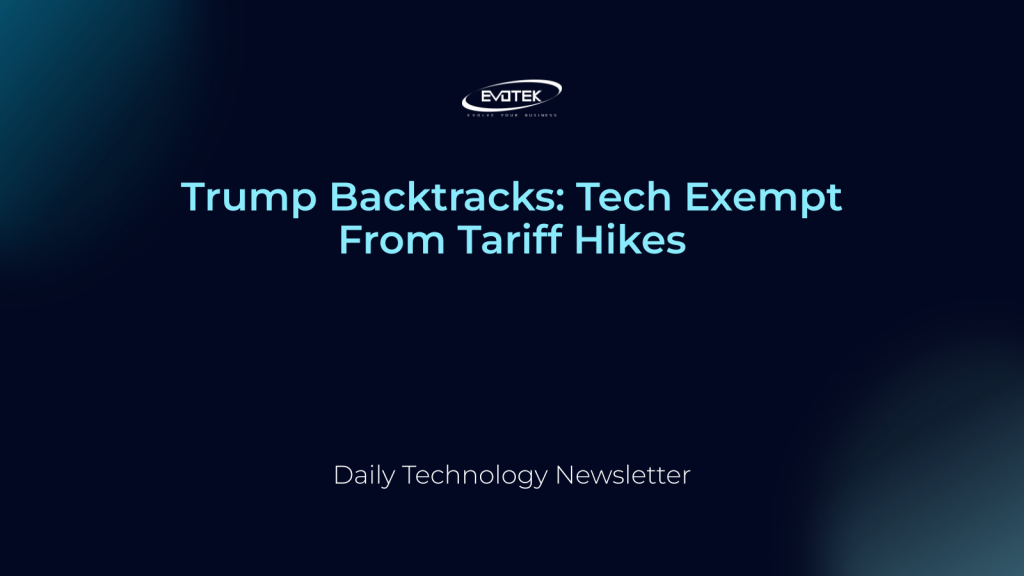In a surprising reversal, President Trump has exempted smartphones, computers, and semiconductors from recently imposed tariffs. New guidelines from U.S. Customs and Border Protection reveal this significant shift in trade policy.
Tech Sector Relief After Initial Tariff Shock
This decision follows Trump’s earlier announcement of a sweeping 145% tariff on Chinese goods, a move that sent shockwaves through the tech industry, particularly impacting companies like Apple, which heavily relies on Chinese manufacturing for its iPhones and other products.
What’s Excluded? The Details
The new guidance extends beyond just phones and computers, encompassing a wide array of electronic devices and components. These exclusions include:
- Semiconductors
- Solar cells
- Flat panel TV displays
- Flash drives
- Memory cards
- Solid-state drives
White House Rationale: Onshoring Manufacturing
The White House stated the exemptions aim to provide companies ample time to relocate production to the United States. Deputy press secretary Kush Desai emphasized the need to reduce reliance on China for critical technologies.
“At the direction of the President, these companies are hustling to onshore their manufacturing in the United States as soon as possible,” Desai stated.
A “Game Changer” for Tech?
The exemptions cover 20 product categories previously subject to Trump’s tariffs on Chinese imports. Experts believe this will benefit tech companies like Apple, which manufactures a significant portion of its products in China.
Dan Ives, a tech analyst at Wedbush Securities, hailed the move as a “game changer.” He noted the tariffs had been a “black cloud over tech,” and the exemptions represent a major victory for the industry.
Market Volatility and Reversal
Since the initial tariff announcement, Apple’s market value had plummeted, and market volatility surged. The reversal suggests the White House responded to the economic impact and pressure from the tech sector.
The tariff relief is retroactive for products that left warehouses by April 5, 2025, offering clarity and financial predictability for U.S. shippers.
Related Articles
- Mortgage rates jump amid tariff uncertainty
- Analysts cut China growth forecasts due to trade tensions

 日本語
日本語 한국어
한국어 Tiếng Việt
Tiếng Việt 简体中文
简体中文